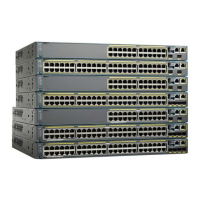CHAPTER 15
Configuring IEEE 802.1x Port-Based
Authentication
This chapter describes how to configure IEEE 802.1x port-based authentication. IEEE 802.1x authentication
prevents unauthorized devices (clients) from gaining access to the network. Unless otherwise noted, the term
switch refers to a standalone switch or a switch stack.
•
Finding Feature Information, page 263
•
Information About 802.1x Port-Based Authentication, page 263
•
How to Configure 802.1x Port-Based Authentication, page 296
•
Monitoring 802.1x Statistics and Status, page 356
•
Additional References, page 357
•
Feature Information for 802.1x Port-Based Authentication, page 358
Finding Feature Information
Your software release may not support all the features documented in this module. For the latest caveats and
feature information, see Bug Search Tool and the release notes for your platform and software release. To
find information about the features documented in this module, and to see a list of the releases in which each
feature is supported, see the feature information table at the end of this module.
Use Cisco Feature Navigator to find information about platform support and Cisco software image support.
To access Cisco Feature Navigator, go to http://www.cisco.com/go/cfn. An account on Cisco.com is not
required.
Information About 802.1x Port-Based Authentication
The 802.1x standard defines a client-server-based access control and authentication protocol that prevents
unauthorized clients from connecting to a LAN through publicly accessible ports unless they are properly
authenticated. The authentication server authenticates each client connected to a switch port before making
available any services offered by the switch or the LAN.
Catalyst 2960-X Switch Security Configuration Guide, Cisco IOS Release 15.0(2)EX
OL-29048-01 263
